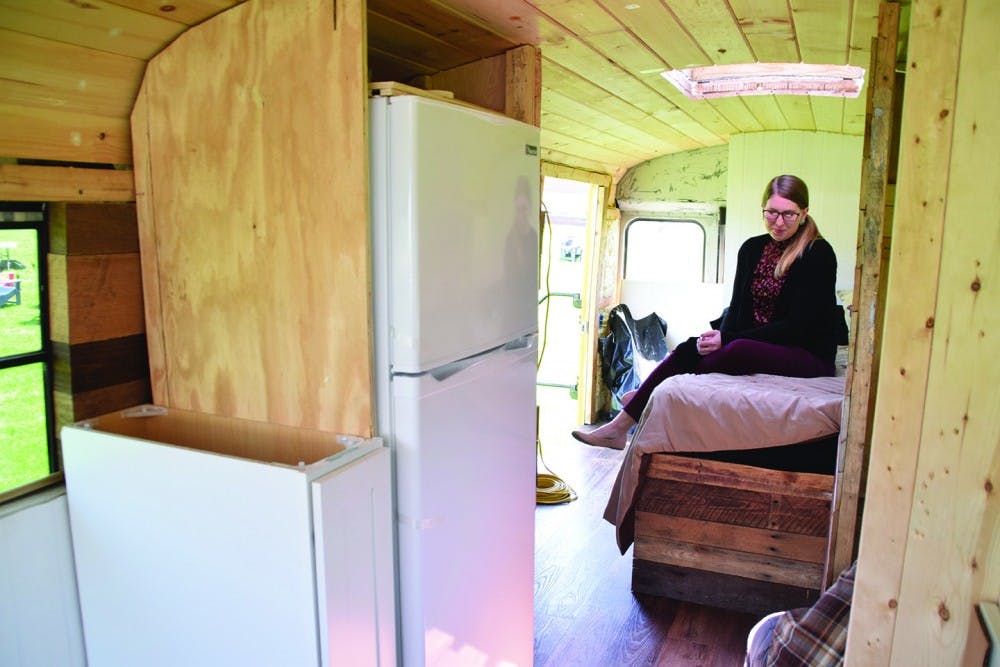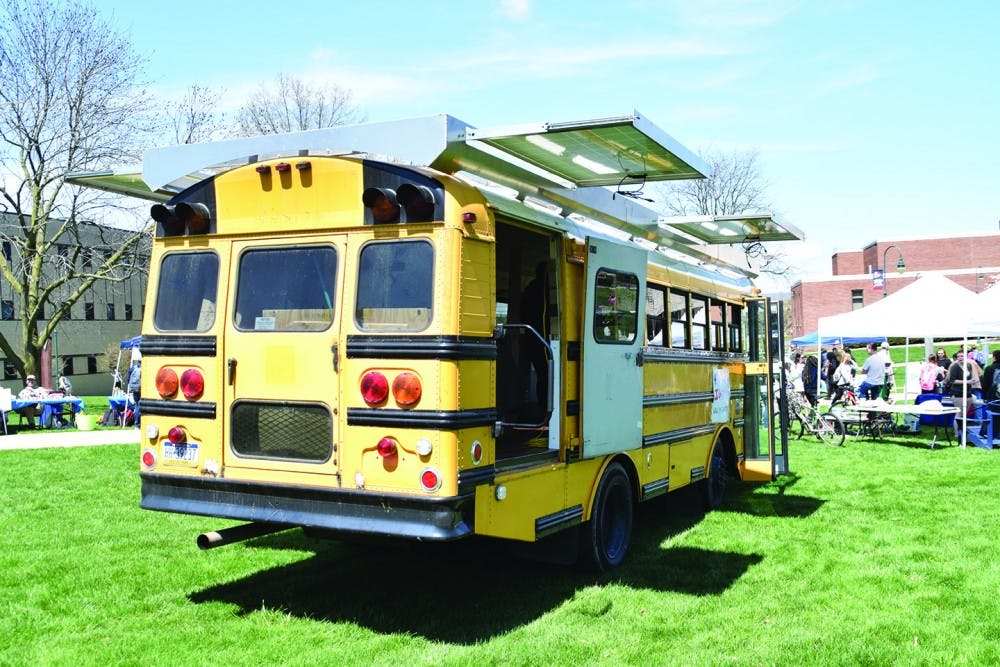Have you ever felt like your home is too big? Do you want to live a greener life, but don’t know where to start? Are you interested in traveling, but feel too tied to the grid to truly let loose and explore?
If you answered yes to any of these questions, living in a sustainable bus may be the lifestyle for you.
Dustin McCorkle, a senior geo-environmental student, has worked tirelessly for almost a year and a half with the help of his partner and girlfriend Holly Helm to flip a bright yellow school bus into a fully-functioning tiny home on wheels. The pair is still working on their project, but they plan to engage communities on sustainability practices once they begin their journey.
“I think in America especially, people just consume so much. If they have $5 they have to spend it on something,” McCorkle said.
“For me this whole thing is about being less dependent on society,” Helm said. “Our only bills will be gas and propane for cooking.”
The two traveled to Florida in December 2016, where they bought the $6,000 bus. They drove the bus back to Pennsylvania where they parked it at a friends’ house, who is also creating a sustainable bus.
The bus will have everything you would expect to find in a normal home, such as a full-size fridge, toilet, bed, couch, sink, stove and television. The bus also has solar panels on it, which can slide in and out.

“They slide the whole way out, so that way when we’re parked we can pull them out,” McCorkle said. “If it’s hailing or something we can just tuck them in so they don’t get damaged.”
The pair is confident that they will live a self-sufficient lifestyle once they move into the bus. McCorkle also hopes to create a rain-catching system outside of the bus.
“We’re kind of winging it,” McCorkle said. “We’re finding that a lot of boat parts work really well for this.”
The couple created a skylight from the old emergency exit in the ceiling of the bus using a window from a yacht. The skylight leads to a deck which will have seating and a projector to watch movies on.
“We have no route planned,” Helm said. “There are places we want to see, we really want to get into Canada and see British Columbia.”
Before the couple makes their move, they must give the bus a new exterior look to satisfy regulations.
“We have to paint it a different color,” McCorkle said. “Legally we cannot leave it yellow.”
As far as cost and time, Helm and McCorkle have learned a lot about what to expect when downsizing. When they started planning the project, they expected it to take about six months.
“It’s also costing a lot of money up front, more than we initially thought,” Helm said.
“Saving is the biggest thing you can do to help yourself downsize,” McCorkle added.
To learn more about Helm and McCorkle’s project, visit sasquatters.com.


The Slate welcomes thoughtful discussion on all of our stories, but please keep comments civil and on-topic. Read our full guidelines here.